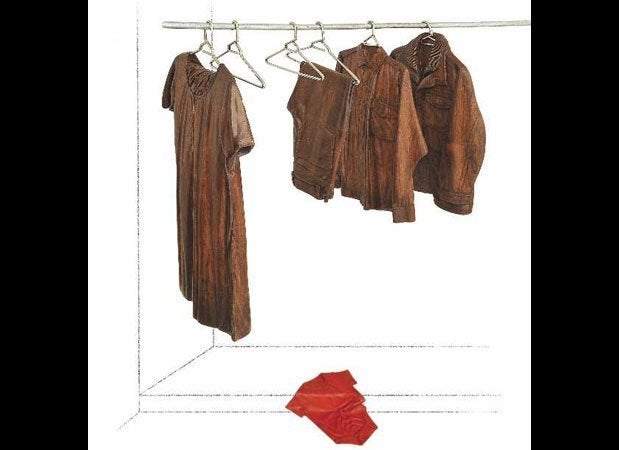
The International Museum of Women recently asked its global online audience to vote for its favorite piece of community art on the subject of motherhood. The finalists were selected from 600 global submissions, all designed to illuminate our understanding of what it means to be a mother today. The winning piece, a stark sculpture series on the theme of miscarriage by Pakistani /American artist Humaira Abid, shows us just how much miscarriage remains a painful and often unspoken taboo for women all over the world. Over a thousand women voted for this piece as their favorite, and many contacted the Museum directly to say how much it meant to them that the Museum was giving this art --and an issue that meant so much to them -- a spotlight.
Why is it that, in a world where almost every aspect of motherhood is discussed and dissected, the incredibly common reality of miscarriage is still so hidden? Why is the pain that so many women experience intensified by the sense that their experience is shameful or should be kept secret?
Part of the reason Humaira Abid's sculptures are so powerful, and spoke to so many women, is that they gesture towards some answers.
In her winning work "Breakdown in the Closet," Abid created a family's wardrobe, carved out of wood. The baby's shirt has fallen on the floor and is stained red to represent miscarriage and loss. The red shirt is a shocking intrusion into a scene of private domesticity. The setting of the closet represents a realm that is hidden and usually inaccessible to the public gaze.
In her artist's statement Humaira says,
"This work is a part of a series called 'RED,' named such because the color red represents love, passion, blood, anger, and loss -- all strong emotions. In the subcontinent, red is the traditional color of bridal dresses, and often is associated with love, sexuality, and fertility. Yet in some parts of Africa, red is a color of mourning and death -- often associated with the color of blood. My work is my reality, and always has been... I have had miscarriages, and I know very well how tough it is, both physically and emotionally. I am from a country and society where showing your emotions and expressing your opinion is not welcomed -- especially if you are a woman. Many experiences and roles of women are not properly appreciated. They are simply considered to be their duty or part of life."
Humaira sees her work as an attempt to create new perceptions of women in a male-dominated society, and to advance equality by giving voice to experiences that would otherwise be unspoken and unseen. "Breakdown in the Closet" startles us by giving explicit voice to an experience that so many women share, but rarely acknowledge or speak about. Its power lies in an ability to provoke and surface a reaction in us to an experience that had been masked or concealed, whether because we feel it shameful to acknowledge we somehow 'failed' as women or as mothers, or because 'women's issues' are seen as unworthy of public space or dialogue.
Humaira Abid's sculpture provokes a visceral reaction within me not just because it is a deeply moving and compelling piece of art, but because I too have experienced the shock, disappointment and pain of miscarriage. I am not alone. Medical experts currently estimate that up to one in five pregnancies end in this way. Yet that individual and collective experience very rarely finds a voice.
Humaira Abid's work is a reminder and challenge to all of us to create a world where the depth and complexity of all of our stories of women, and as mothers, can be seen, acknowledged and understood. And those stories about if, how, when and why we can become mothers are some of the most important stories of all. What happens to women in that private realm is not just a necessary "duty or part of life," but part of a larger narrative that matters to society as a whole.
Humaira Abid is the winner of the International Museum of Women's Global "Community Choice Award" held in conjunction with its online exhibition, MAMA: Motherhood Around the Globe.
